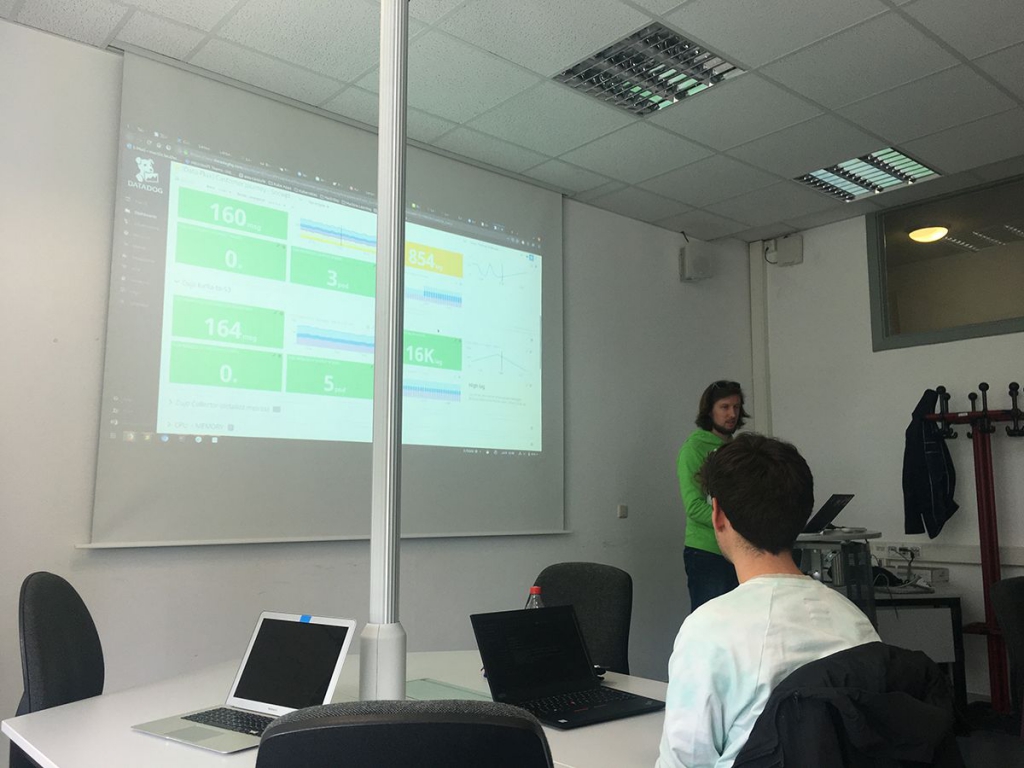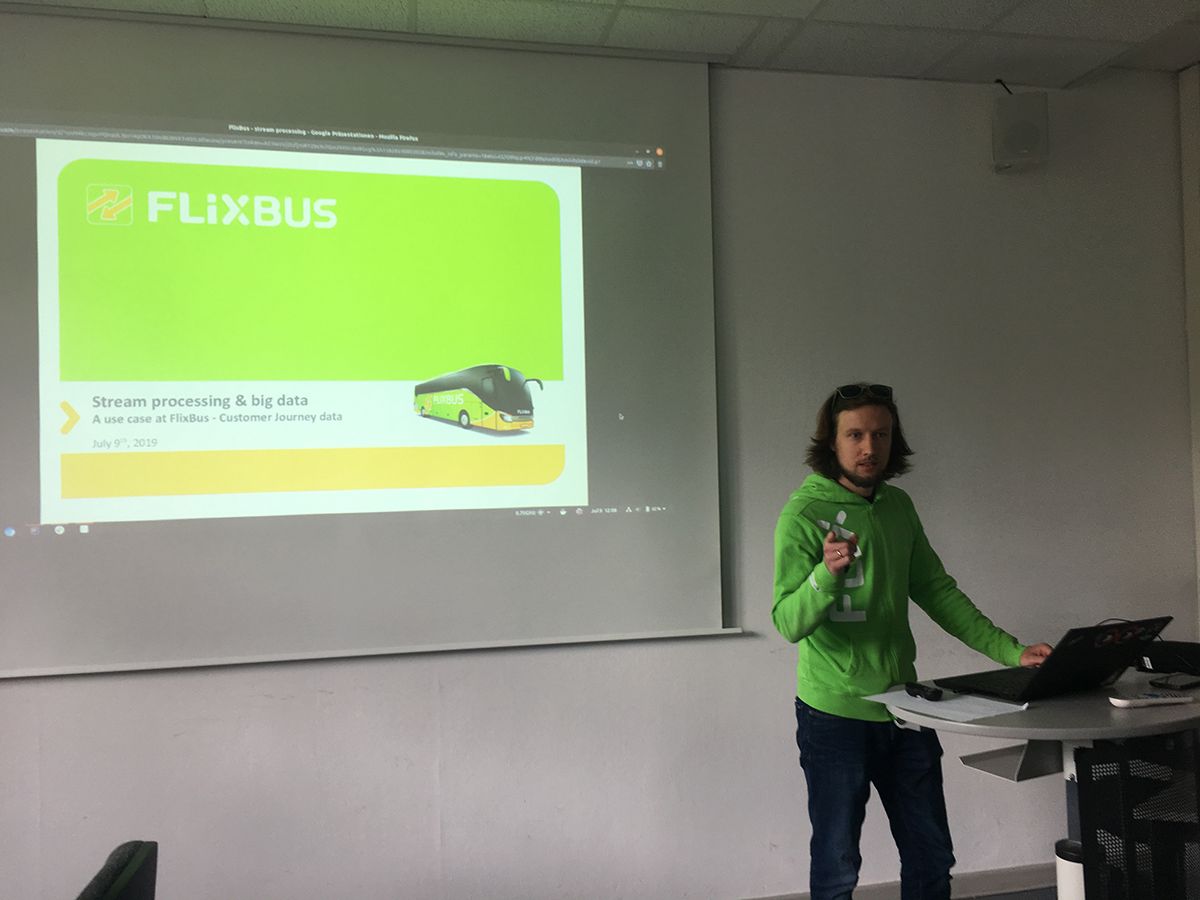In the last lecture of this semesters “Enterprise Architectures for Big Data” class we had the pleasure to have Martin Leuthold as a guest lecturer, talking about applications of stream processing in the context of customer journeys. Martin is a former BIPM student who was part of the very first cohort of this master’s program, which makes him a very interesting person in terms of the amount of experience he can build upon and talk about. Martin currently works as a Data Engineer for FlixMobility Tech GmbH, a subdivision of the parent company FlixMobility GmbH. They are best known for being a young mobility provider (FlixBus) with notable green buses operating all over Europe. Without owning the operating busses themselves and rather providing a state-of-the-art booking and ticketing system combined with route planning and marketing to regional bus partners, FlixBus built up Europe’s largest intercity bus network.
Since 2013 FlixBus moved 100 million customers from A to B. This number already implies how important it is to understand the customer and based on the customer data continuously improve and individualize products. This data is mostly generated throughout the customer journey, a very important area for E-commerce. Since getting back this data from external partners is only possible once a day, FlixMobility Tech decided to implement stream processing and thus gather the data themselves by utilizing different technologies. One of them is a framework called Snowplow that supports 12 different kind of trackers (JavaScript, Android, iOS, etc.) The JavaScript tracker is running on the FlixBus website and retrieves all kinds of available parameters from the user (timezone, device used, screen resolution, etc.). This continuous stream of incoming data is then further processed by Kafka Streams, which is a client library for building applications and microservices based on Kafka. Kafka is the data’s entry point to a data lake and distributes nodes to the existing partitions. That’s how a throughput of 200 messages per second is achieved, further scalable (up and down) by using microservices. This datastream can be turned into real-time insights in favor to the customer, represented by individualized recommendations or discounts.

All these steps were shown to us by Martin in a hands-on session where we could live follow the interactions of the different technologies in the workflow. This is how FlixBus generates insights from customer journey data.
Besides to the use case, Martin was likewise sharing stories of his time as a BIPM student and his first experiences as a professional. Amongst others he encouraged the students to keep being open minded in terms of jobs and positions we might take over after graduating. He himself talked about how the job transition to FlixMobility Tech GmbH after 2 years of working for another company fulfilled his intrinsic motivation of working with state-of-the-art concepts in the area of data streams.
In the end, the presentation of Martin Leuthold was not only very relevant in terms of real-life applications of concepts learned in the lectures but also pointed out different possibilities that BIPM graduates can expect from the job market.



Leave A Comment